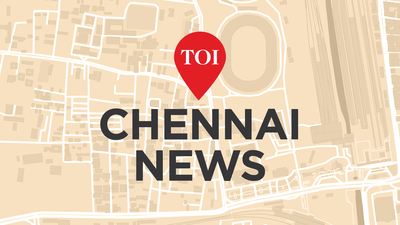How metro can pay for itself and build low-cost homes | Chennai News – Times of India

Five years ago, the Tamil Nadu govt chose a progressive financial tool to build affordable houses in areas that were growing fast, aided by public infrastructure investment. These homes, under state and central housing schemes, would receive bonus funding thanks to higher property values wherever the govt was spending on metro rail lines.The mechanism at work, Land Value Capture(LVC), helps raise funds for housing — and potentially for future metro rail projects — by creating a land value ‘uplift’. Just announcing an infrastructure project triggers a rise in property prices. It is unclear how much funding came through LVC for the proposed housing programme in the past five years, but the prospects for using such funds for transport projects look bright.In the 2025 budget, the state govt announced plans to introduce new metro rail lines, extend existing ones, launch a regional rapid transport system (RRTS) covering several districts, and build a 2,000-acre city near Chennai.This is part of a planned shift totransport-oriented development(TOD) in cities and towns. Given that metro rail Phase II involves public expenditure of ₹63,246 crore in Chennai and ₹10,740 crore in Coimbatore under equity sharing and multilateral institution loans, the resulting real estate premium should accrue significantly to the govt, and not just to private real estate developers. Additional metro lines are on the cards, and Madurai is also on the list of proposed cities.The state budget announced the RRTS semi-high-speed train format to link Chengalpattu, Villupuram, and Vellore with Chennai, and Tirupur-Salem with Coimbatore.The model RRTS between Delhi and Meerut, with a price tag of ₹30,274 crore and a top speed of 160 km/h, is funded through multilateral and domestic tax funding. Investments have pushed up property prices around stations, with Chennai seeing rates rise by thousands of rupees per square foot. One gated community on Anna Salai near a metro station advertises luxury flats starting at ₹7 crore, highlighting the potential to fund affordable housing through value capture.The Union Ministry of Housing and Urban Affairs defines the benefits of public infrastructure funding and LVC thus: “Value capture is based on the principle that private land and buildings benefit from public investments in infrastructure and govt’s policy decisions. Part of the increment in the value of land and building should be captured to fund projects being set up for the public by the central/state govt and urban local bodies.” In Tamil Nadu, value capture from the metro is limited to commercial use of station spaces, advertising, and naming rights. While Chennai’s third master plan’s (2026-46) revised terms of reference mention LVC, this needs to be applied to Tier II cities too.LVC works by monetising the economic surplus generated through govt planning, as seen in Singapore, Hong Kong, and the US. High-capacity rail hiked land values by 60% in New York and 40% in San Francisco near stations. A third of London’s Crossrail (metro) system was funded through a business tax on non-domestic properties. Private entities here enjoy the premium from metro rail entirely, in the absence of a framework to estimate, quantify, and share value gain by the real estate developer and govt.This gap stands in contrast to the many charges that builders pass on to property buyers. Gated communities earmark “pass-through” charges running into a few lakhs of rupees per flat, which includes documented and undocumented payments to civic agencies in charge of services such as electricity and water provision. One builder recently quoted ₹3 lakh as pass-through charges for a 2 BHK flat in Padur, South Chennai. Under a transparent framework, grey pricing and black money would be eliminated, and the value gains proportionately harvested by the govt towards metro rail and bus network investments.One of the methods used to extract value followed so far is transferable development rights (TDR). More than a decade ago, the CMDA was allowing TDR under the Chennai master plan for private lands acquired, but the concept got off to a slow start partly due to a lack of clarity on pricing. Value capture would extend govt gains through a land value levy. In greenfield projects such as the planned satellite city, the govt could hold land until infrastructure is ready and sell at market rates. The same approach applies to Tier 2 cities such as Coimbatore and Madurai. It would also be fair, considering civic planning agencies are willing to give a higher floor space index to the builder around metro stations.The Union govt says value capture financing “is an opportunity for the private sector because the projects are planned for the overall development, thus increasing the value and are also backed by the govt”. An equitable system could levy a betterment charge on builders on the rate per square foot, which should not be passed on to the flat purchaser by law. High-value commercial properties, such as business towers, could be charged a higher property tax rate. In all instances, LVC funds should be sequestered for use in housing and transport projects.The state govt would have to start by creating empowered planning and transport integration bodies for major cities, discover the value uplift from various investments, and decide on appropriate financial arrangements to appropriate some of the value it has helped generate.(The writer is a Chennai-based journalist)Email your feedback with name and address to southpole.toi@timesofindia.com
















